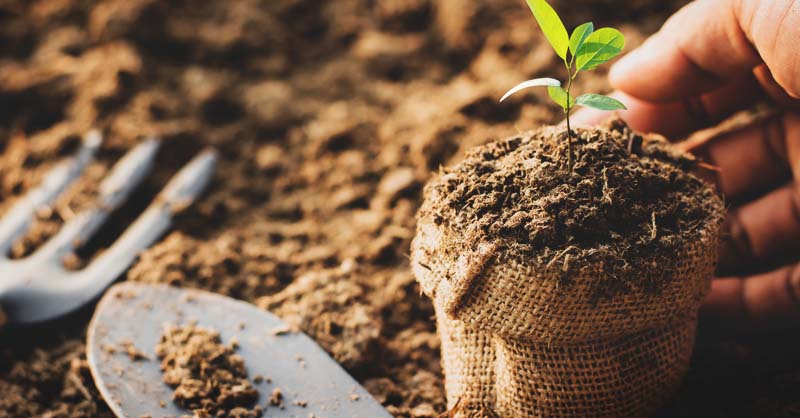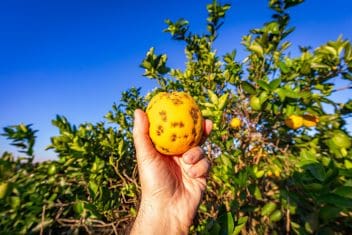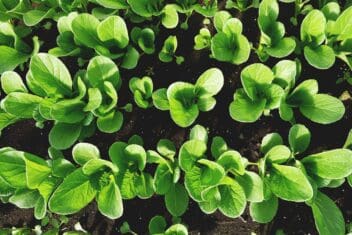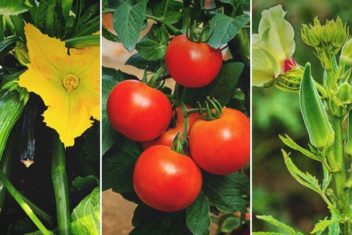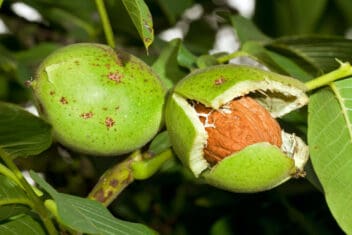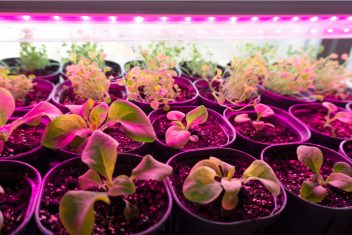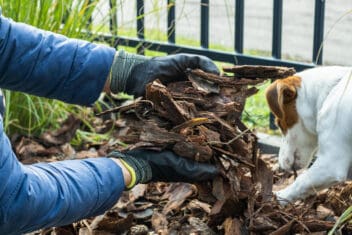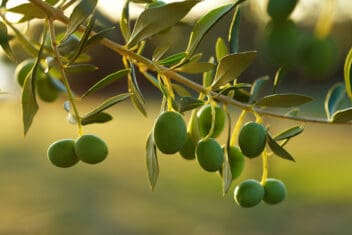It’s fitting that I’m writing about soil temperature when I’m living through one of the most unpredictable seasons in my region that I can remember. Spring is here, but you wouldn’t know it. One day it’s warm and sunny, with the snow melting everywhere, and the next we’re faced with torrential rainstorms and freezing temps.
It’s the most annoying time for me as a gardener. In the spring, everything is up in the air. Two years ago at this time, I had already sown greens and radishes, and I was harvesting baby spinach. This year, parts of my garden are still filled with snow.
It’s a good reminder of why understanding soil temperature, and how it relates to your garden, is so vital. No matter what the weather is doing, the soil temperature can determine a lot. Having a bit of knowledge about the topic is essential for a gardener in a region like mine, but it’s useful for any gardener.
Below, I’ll explain the reasons why you should care about soil temp, how to figure out the temperature of your soil, and how to alter the temperature to fit your needs. Sound like magic? It’s not, and it’s more important than you might realize.
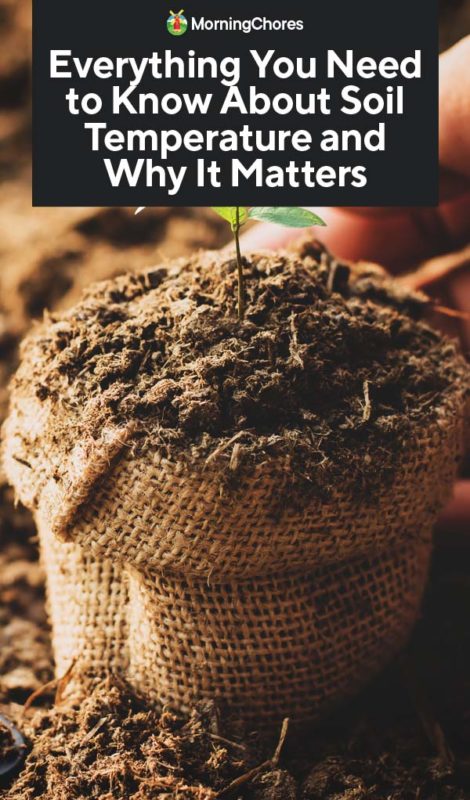
Why Soil Temperature Matters
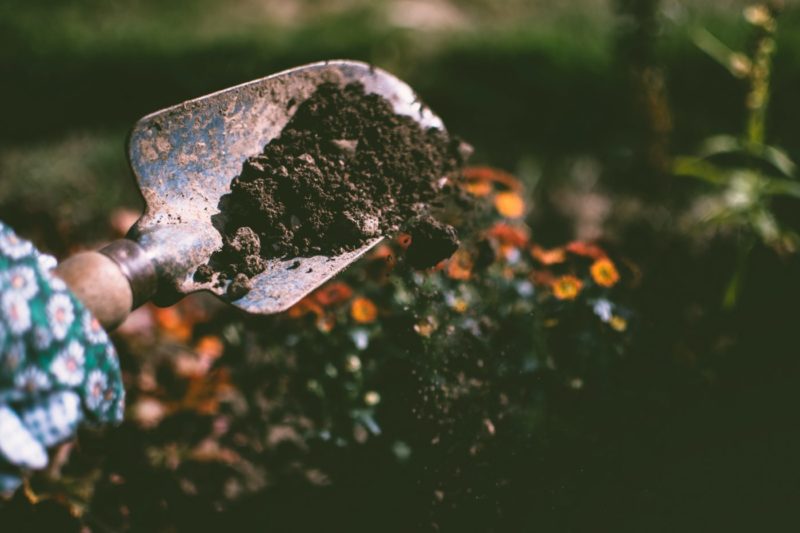
Knowing the precise soil temperature is useful for getting your seeds to germinate, whether indoors or outside. It’s also a helpful guide for how well your seedlings or transplants will do if planted outside. The right soil temperature makes all the difference. If the soil is too cold, some seeds won’t germinate. Tomato and eggplant seeds, for instance, require warmer temperatures to sprout and might rot if left in cold, damp soil.
Sometimes checking the weather forecast doesn’t do it. It may look like spring has arrived, but the soil may still be frozen. Testing the soil temperature can be a more accurate guide than abiding by the last frost date info for your zone.
Did you know that just because the ambient air temperature is nice and warm that the soil temperature may not match up? In the winter, for instance, the soil helps to insulate the roots of overwintering plants. That’s another reason it’s vital to test the soil.
Determining Soil Temperature
What’s the best way to determine the temperature of your soil? A quality thermometer will do the trick. Pick one designed especially for monitoring soil temps. The ground may still be cold down below even if the surface temperature is nice and toasty, so a thermometer will give you a better understanding.
When taking a reading, avoid direct sunlight to prevent the heat from interfering with readings. Take care to measure at a depth of at least 5-inches, especially if you’re checking the temperature before transplanting.
Be careful if it’s early in the season. The soil may be hard, clumpy, or frozen and forcing your thermometer into the earth may break it. Also, take readings at different times during the day to account for the sun’s warming rays. Finally, make sure to measure multiple areas of your garden. Some spots in your garden may be warmer or colder than others.
Soil Temperature Classifications
One useful tidbit to keep in mind is that there are four different soil temperature classifications. Minimal, optimum, realistic, and maximum. Note that these temperatures are not the same for all seeds.
Minimal temperature:This is the bare minimum required for germination. Any colder and the seed will not sprout and is likely to rot.
Optimum: This is the ideal temperature that will encourage the most rapid growth. It’s the perfect temperature for germination. You’ll have the quickest results with soil that’s reached this temperature range.
Realistic: This is a range in between the minimum temp and optimum temp. It’s improbable that you can keep soil temperature at its optimum level all the time. It’s bound to fluctuate. Realistic temperature offers a guideline range to aim for when attempting to germinate seed successfully.
Maximum temp: This is the max temp at which seeds will germinate.
Ideal Soil Temperatures
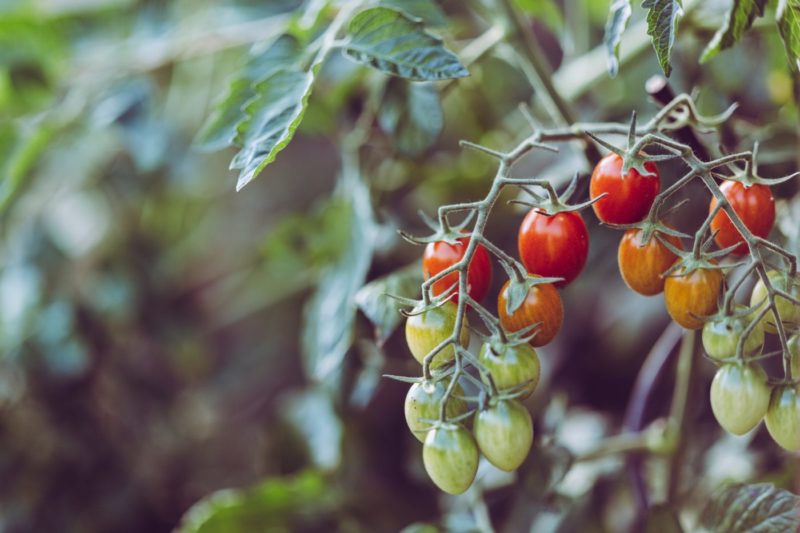
Is there an ideal soil temperature for gardening? It depends entirely on the task at hand. Are you planting seeds? Some like it cold, and some like it hot. Eggplants, for example, won’t germinate unless the soil is warm enough. Spinach, on the other hand, prefers cooler soil temperatures.
What happens if you plant outside of ideal temperature zones? You’ll end up with slow germination times and potential seed rot.
When planting outdoors, don’t forget about nighttime temps. The soil can cool dramatically when the sun is not shining, which may affect temperature sensitive plants. It’s why even though in some areas it may seem safe to plant tomatoes in May when the daytime temperatures are warm, it’s not ideal since the mercury is likely to drop in the evening and through the night.
My last frost date is in late May, but even then, the nighttime temperatures are a little bit unpredictable. It’s essential to keep an eye on the forecast to make sure I’m transplanting heat-loving plants once the nighttime temperatures have leveled off a bit.
Suggested Temperatures for Plants
For germinating seeds, take a peek at this handy list to determine ideal temperature ranges.
Vegetables:
Here are the realistic soil temperature ranges for some popular veggies.
- Asparagus: 50 to 85°F
- Beans: 60 to 85°F
- Beets: 50 to 85°F
- Carrots: 45 to 85°F
- Corn: 50 to 95°F
- Cucumber: 60 to 95°F
- Eggplant: 75 to 90°F
- Lettuce: 40 to 80°F
- Melons: 60 to 85°F
- Onions: 32 to 85°F
- Peppers: 65 to 95°F
- Pumpkins: 60 to 95°F
- Radishes: 45 to 90°F
- Squash: 70 to 95°F
- Spinach: 45 to 75°F
- Tomatoes: 70 to 95°F
- Watermelons: 60 to 95°F
Herbs:
Here are the optimum soil temperature ranges for a few herbs.
- Basil: 65-85°F
- Caraway: 60-65°F
- Chives: 60-75°F
- Cilantro: 60-70°F
- Dill: 70-85°F
- Lavender: 70-85°F
- Licorice: 65-70°F
- Mint: 65-70°F
- Oregano: 65-70°F
- Rosemary: 65-70°F
- Sage: 70-85°F
- Thyme: 60-75°F
- Yarrow: 70-85°F
Flowers
Here are the optimum soil temperatures for a few popular flowers:
- Alyssum: 55-70°F
- Aster: 65-70°F
- Bachelor’s Button: 60-65°F
- Bee Balm: 60-70°F
- Begonia: 70-85°F
- Calendula: 60-65°F
- Columbine: 70-85°F
- Cosmos: 70-85°F
- Daisy: 70-85°F
- Delphinium: 70-85°F
- Echinacea: 70-85°F
- Hibiscus: 70-85°F
- Lobelia: 65-70°F
- Marigold: 70-85°F
- Nasturtium: 65-70°F
- Pansy: 60-65°F
- Snapdragon: 60-70°F
- Sunflower: 65-85°F
- Zinnia: 70-85°F
A quick summary to keep in mind: nightshade vegetables like it hot (typically over 70°F) while greens love it cool (as cold as 40°F). Herbs and flowers generally like things around 65°F.
If all this makes your head spin and you want average ideal temperature for germinating seeds in general, a good middle ground is about 65°F. Thankfully, most seed packets provide you with the information you need for successful germination, including ideal soil temperature.
Methods for Adjusting Soil Temperatures
Just because the soil is naturally a specific temperature, that doesn’t mean you can’t influence things a bit. Here are a few methods to warm or cool your earth.
Warming the Soil
What happens if it’s early in the season and the soil is still cold, but you want to start planting? There are many tools for giving your soil an extra boost of warmth, such as:
- Plastic mulch
- Row covers
- Hoop houses
- Greenhouse
- Cold frames
- Cloches
Each of these allows growers to get a head start on the season without waiting around for the sun and ambient temperature to work their magic on the soil. In some cases, these tools can significantly warm the ground by several degrees. Take caution to air out enclosed growing spaces, however, when days get super steamy. And don’t forget to water your seedlings and plants even if they’re under plastic row covers or cold frames.
The best way to ensure your soil is warm enough and ready in time for the gardening season? Choose an appropriate garden location that gets enough sun!
Cooling the Soil
What about altering soil temperatures to keep the soil cool? While positioning plants in the shade is a possibility (use containers that you can easily move around to do this) it’s not a practical solution for large raised beds or in-ground gardens.

If you want to grow plants that prefer cooler temperatures, like lettuce or spinach, it’s often tough in the high heat of the summer. It’s also more challenging to cool the soil than to warm it, but it is possible to offer up a bit of respite for heat-sensitive crops.
Water retains heat and moistened soil may be cooler than the air, which is why mulching is helping for plants that prefer cooler temperatures. Mulch has helped me prevent my lettuce from bolting too quickly in the summer.
Shade cloth is another superb tool for keeping the sun from harshly affecting your plants.
Indoor Soil Temperature
If you’re indoors and finding it tough to start seeds because your growing area is too chilly, heat mats are an excellent option. They’re a must-have accessory in my seed starting toolkit because my growing space happens to be in my basement.
It’s often much cooler downstairs than it is upstairs and while some seeds are happy to sprout in those temperatures, I’ve had trouble germinating nightshade plants in the past. I use my heat mats expressly for tomatoes, peppers, and eggplants.
Now that you have all the knowledge you need to test and manage your soil temperatures effectively, it’s time to get planting. Be sure to share any tips you have on getting your seeds sprouting in the comment section below.

